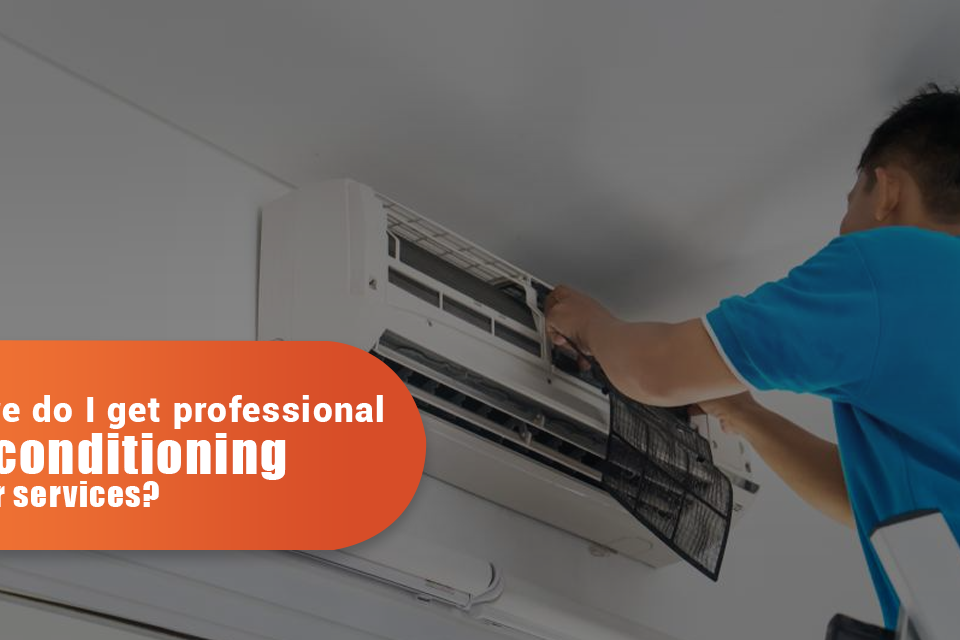HVAC installation & Plumbing Services in Mississauga & Sentral HVAC Repair

Repair or Replace: Weighing the Cost-Effectiveness of Refrigerator Repairs
August 23, 2023
Heat Pump 101: Understanding the Technology behind Efficient Heating and Cooling
October 25, 2023Welcome to “Rooftop Units 101: Understanding the Basics of HVAC Systems on Your Roof.” In this comprehensive guide, Sentral HVAC Plumbing will delve into the fundamentals of rooftop units (RTUs) and their role in heating, ventilation, and air conditioning (HVAC) systems.
Rooftop units are a popular choice for commercial buildings as they provide efficient and space-saving solutions. These self-contained HVAC systems are installed on rooftops, offering benefits such as easy accessibility for maintenance and reduced noise pollution inside the building.
Whether you’re a business owner or an HVAC services enthusiast looking to enhance your knowledge about rooftop units’ functionality or considering installing one in your commercial property – this guide has got you covered! So let’s dive into “Rooftop Units 101” and unlock the secrets behind these essential components of modern-day HVAC systems on your roof.
Introduction to Rooftop Units: An Overview of Their Functionality and Benefits
Introducing rooftop units (RTUs): a versatile and efficient HVAC solution for commercial buildings. These self-contained systems are installed on the roof, providing heating, cooling, and ventilation in one integrated unit. RTUs offer several benefits including space-saving design, easy installation and maintenance, improved indoor air quality, and energy efficiency.
By utilizing the rooftop as their location, RTUs free up valuable floor space within the building while delivering optimal climate control throughout different areas. Their modular nature allows for scalability to meet varying demands of businesses. With advanced features like programmable thermostats and zoning capabilities, RTUs provide precise temperature control for enhanced comfort. Furthermore, their sealed construction minimizes air leakage which improves energy efficiency by reducing heat loss or gain.
Whether it’s a small retail store or a large office complex, understanding the functionality and advantages of rooftop units can help businesses make informed decisions when it comes to selecting an HVAC system that meets their specific needs.
Proper Placement and Installation Considerations for Rooftop Units
Proper placement and installation of rooftop units (RTUs) are crucial for their optimal performance and longevity. When it comes to RTUs, careful consideration must be given to factors such as location, accessibility, structural support, and airflow.
Firstly, the location of the RTU should be strategically chosen to minimize noise pollution and ensure efficient operation. It should be placed away from occupied areas or windows to prevent disturbance while providing easy access for maintenance purposes.
Additionally, proper structural support is essential to bear the weight of the unit. The roof structure should be evaluated by a professional engineer to determine its load-bearing capacity before installing an RTU.
When it comes to airflow considerations, sufficient clearance around the unit is necessary for proper ventilation and heat dissipation. Air intakes and exhausts should not face obstructions that could impede airflow or compromise system efficiency.
Maintenance and Upkeep: Ensuring Optimal Performance and Efficiency
Regular maintenance and upkeep of your electrical system are crucial for ensuring optimal performance and efficiency. By implementing a proactive approach, you can prevent potential issues, extend the lifespan of your electrical components, and maintain energy efficiency.
One important aspect of maintenance is inspecting your circuit breakers for any signs of wear or damage. Loose connections, corrosion, or overheating can lead to malfunctions or even fires if left unaddressed. Additionally, cleaning dust and debris from outlets and switches helps to improve their functionality while reducing the risk of electrical problems.
Another essential task is checking for loose wiring or frayed cables that may pose safety hazards. Tightening connections and replacing damaged wires should be done by a qualified electrician to ensure proper handling.
Additionally, scheduling regular professional inspections allows experts to identify potential issues before they escalate into major problems. They can assess the overall condition of your electrical system, test its performance, and make necessary repairs or upgrades.
By prioritizing maintenance and upkeep in your home’s electrical system, you not only enhance its longevity but also promote safety and efficiency. Remember to consult with licensed professionals who can provide expert guidance tailored to meet your specific needs.
Energy Efficiency Measures for Maximizing Cost Savings with Rooftop Units
Implementing energy efficiency measures for rooftop units (RTUs) is essential to maximize cost savings in commercial buildings. These units are responsible for cooling and heating large spaces, making them significant contributors to energy consumption.
Installing programmable thermostats allows for precise temperature control based on occupancy schedules, preventing unnecessary operation during unoccupied periods. Utilizing economizers can also improve efficiency by using outdoor air when conditions allow instead of relying solely on mechanical cooling.
By implementing these energy efficiency measures for rooftop units, businesses can significantly reduce their operational expenses while promoting sustainability efforts. It’s important to consult with HVAC professionals who specialize in optimizing RTU performance to ensure maximum cost savings without compromising comfort levels within commercial spaces.




